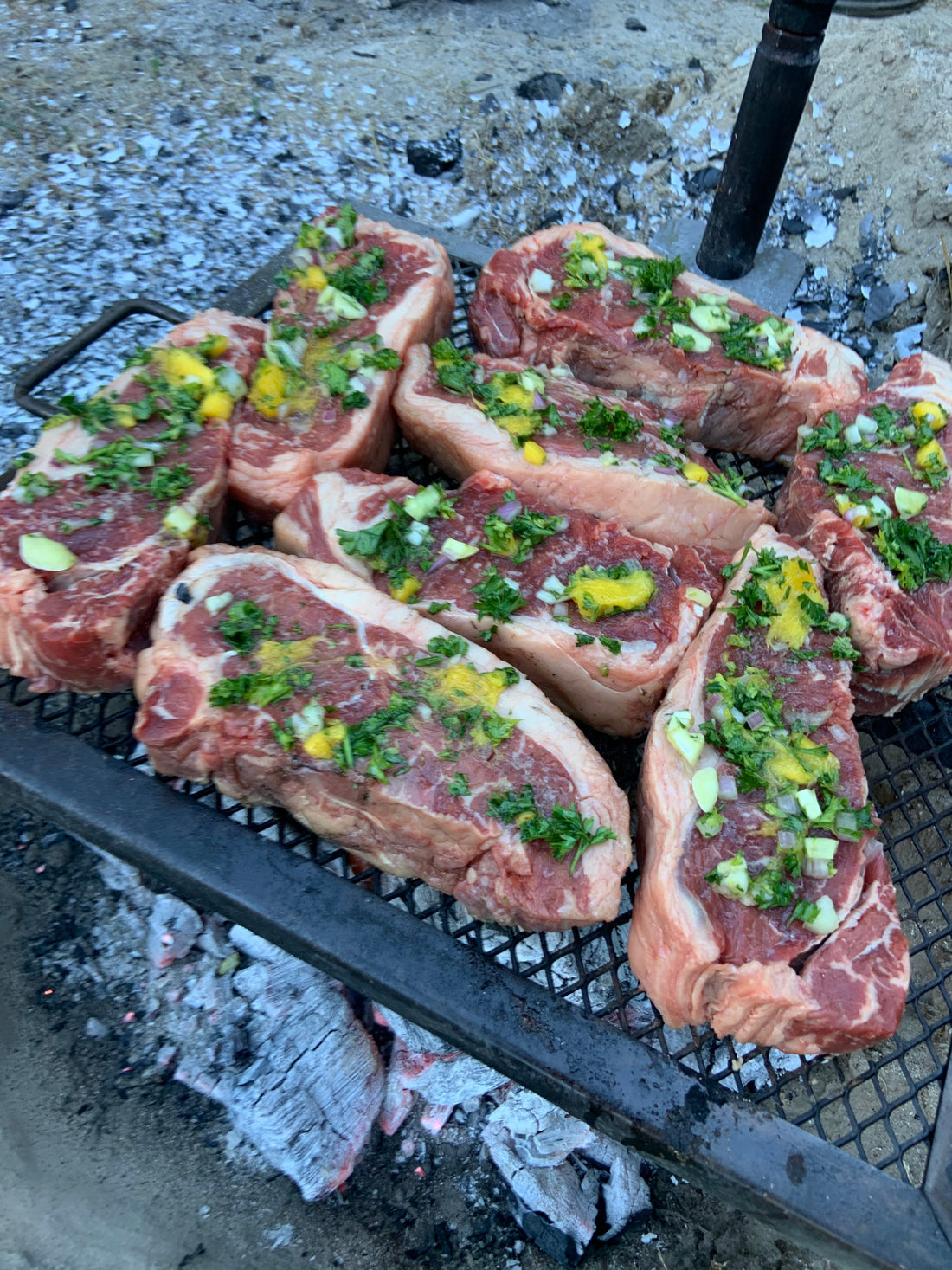
Ribeye vs. Flat Iron vs. New York Strip vs. Flank Steak: A Complete Guide (+ How to Cut Steak the Right Way)
Share
Whether you're planning a backyard BBQ, a weeknight dinner, or a gourmet feast, choosing the right cut of steak makes all the difference. Ribeye, flat iron, New York strip, and flank steak are four popular options — each offering distinct flavors, textures, and ideal cooking methods. Let’s dive into how they compare and wrap up with the best way to cut steak for maximum tenderness.
Ribeye
Overview:
Ribeye is prized for its rich marbling — those streaks of intramuscular fat that melt during cooking and create juicy, flavorful bites.
-
Source: Cut from the rib section (specifically ribs six through twelve) of the cow 1.
-
Flavor: Intensely beefy and buttery due to high fat content.
-
Texture: Extremely tender when cooked properly.
-
Best Cooking Methods: Grilling, pan-searing, or broiling to medium-rare or medium to let the fat render perfectly.
Fun Fact: A "tomahawk steak" is simply a ribeye left attached to a long rib bone.
Flat Iron
Overview:
Flat iron steak is a relatively newer star, popularized for its tenderness and affordability.
-
Source: Cut from the top blade of the shoulder (chuck primal) 2.
-
Flavor: Rich and beefy, somewhat similar to ribeye but less fatty.
-
Texture: Surprisingly tender, second only to filet mignon according to the National Cattlemen’s Beef Association 2.
-
Best Cooking Methods: Grilling, pan-searing, or sous-vide to medium-rare.
Tip: Avoid overcooking flat iron steak — its connective tissue can become tough if taken past medium.
New York Strip
Overview:
The New York strip is a classic steakhouse cut — bold, meaty, and satisfying.
-
Source: Cut from the short loin, behind the ribs 1.
-
Flavor: Strong beef flavor with moderate marbling.
-
Texture: Firm, with a slight chew but still tender.
-
Best Cooking Methods: Grilling, broiling, or pan-searing. A reverse sear also works well for thicker cuts.
Nickname: It’s sometimes called a Kansas City strip or just strip steak.
Flank Steak
Overview:
Flank steak is lean, flavorful, and perfect for marinating.
-
Source: Cut from the lower abdominal muscles of the cow 3.
-
Flavor: Very beefy and slightly sweet, especially when marinated.
-
Texture: Lean with pronounced muscle fibers — can be tough if not sliced correctly.
-
Best Cooking Methods: Grilling or broiling quickly at high heat to medium-rare or medium.
Important: Flank steak absolutely must be sliced against the grain after cooking for the best texture (more on that below).
How to Cut Steak for Maximum Tenderness
No matter which cut you choose, how you slice your steak can make or break the eating experience. Here's the correct way to do it:
1. Rest Your Steak
Before cutting, let the steak rest for 5–10 minutes after cooking. This allows juices to redistribute and prevents them from spilling out.
2. Identify the Grain
Look closely at the steak and find the direction the muscle fibers (the “grain”) are running.
-
In ribeye and strip steak, the grain tends to be less obvious.
-
In flank and flat iron, it's very visible — long muscle lines running lengthwise.
3. Slice Against the Grain
Always cut perpendicular to the grain, not along it. This shortens the muscle fibers, making each bite tender instead of chewy.
-
For example, if the fibers run north-south, slice east-west.
-
Use a sharp knife and cut thin slices (about ¼ inch thick for flank and flat iron).
4. Cut at a Slight Angle (Optional)
For even softer texture, angle your knife about 45 degrees instead of slicing straight down — this creates wider, more tender slices.
Final Thoughts
Choosing between ribeye, flat iron, New York strip, and flank steak depends on your cooking method, budget, and personal taste:
| Cut | Flavor | Texture | Best Cooking Method |
|---|---|---|---|
| Ribeye | Rich, buttery | Very tender | Grill, pan-sear |
| Flat Iron | Beefy, robust | Very tender | Grill, pan-sear |
| New York Strip | Bold, meaty | Firm but tender | Grill, broil |
| Flank Steak | Beefy, lean | Slightly chewy | Grill, broil |
And remember — no matter the cut, cutting against the grain is the key to an unforgettable steak experience.
References
Would you also like me to format this into a downloadable PDF or prep a social media caption you could post alongside the blog?
Footnotes
-
American Angus Association. (2022). "Beef Cuts Chart." Retrieved from angus.org. ↩ ↩2
-
National Cattlemen’s Beef Association. (2023). "Flat Iron Steak Profile." Retrieved from beefitswhatsfordinner.com. ↩ ↩2
-
Food Network. (2021). "Everything You Need to Know About Flank Steak." Retrieved from foodnetwork.com. ↩
